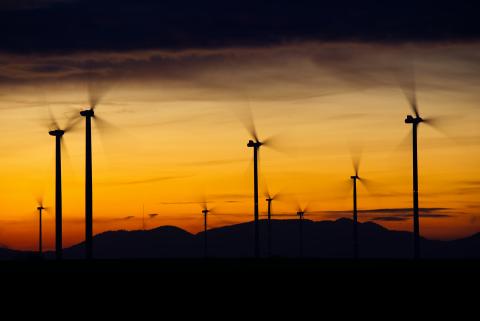IEEFA Update: In U.S. Utility NextEra, a Template for Electricity-Generation Transition
The best-performing electricity utility in the U.S. is also the world’s biggest installer of renewables.
NextEra Energy Inc., a major national electricity provider with 47 gigawatts (GW) of capacity focuses on providing long-term shareholder value through investment in clean energy—and is succeeding in its strategy.
The company likes to highlight that it is the world’s largest generator of renewable energy from the wind and sun. In its recently released fourth-quarter and full-year financial results, NextEra announced it commissioned a record 2.15 GW of renewables in 2017, including 1.6 GW from repowering existing projects (2.15 GW is probably the highest renewable energy install rate by any company ever in a single year).
Further, NextEra plans to double this rate of installs in the next few years, targeting 3-4 GW per annum of new renewables through 2020.
NextEra has done all this while increasing net income and earnings per share and continuing to maintain a strong balance sheet. Its share price continues to outperform the market.
In a conference call covering fourth-quarter results, CEO Jim Robo predicted that it will be cheaper to install new renewables than to continue operating existing coal and nuclear plants by the early 2020s.
NEXTERA WAS ONE OF TWO TRANSITION CHAMPIONS—alongside Enel of Italy—in IEEFA’s recent “Global Utilities in Transition” report, which presented case studies of 11 major electricity utilities around the world.
Some of those companies, including AGL of Australia and Engie of France, have begun a belated transition away from coal. Some, including South Africa’s Eskom, continue to lag.
NextEra is of note for its trend toward signing more and more power purchase agreements (PPAs) with corporations to underpin its renewable energy developments. The latest of those would see Facebook purchase the electricity produced from NextEra’s 50 MW Casa Mesa wind project; Facebook is seeking to contract 216 MW of renewables via PPA contracts.
Robo has noted also that NextEra is increasing its focus on combining renewables with storage. This follows recent astonishingly low bids received for combined renewables and storage projects in Colorado, where some of those bids suggest that renewable power costs less than operating existing coal-fired capacity in that state.
The growing cost-competitiveness of renewables drove a record volume of corporate PPAs in 2017, according to Bloomberg New Energy Finance. Corporations signed up for the offtake of 5.4 GW of renewable energy during the year, surpassing the record set in 2015.
Most of this activity was centered on the U.S., which accounted for 2.8 GW of the total. The trend is continuing in 2018, with Budweiser announcing that all of its U.S. beer-brewing is to be run on 100% renewable energy.
Whether driving renewables growth through corporate PPAs, wholesale sales, or within its regulated power utility in Florida, NextEra is demonstrating the future of electricity markets.
It is an example, too, of how early transition to renewables supports profitable and sustainable electricity generation business models, delivering sustained outperformance for shareholders.
Simon Nicholas is an IEEFA energy finance analysts.
RELATED ITEMS:
IEEFA Report: China in 2017 Continued to Position Itself for Global Clean Energy Dominance
IEEFA Update: The Saudi Arabia of Solar? American Indian Country












